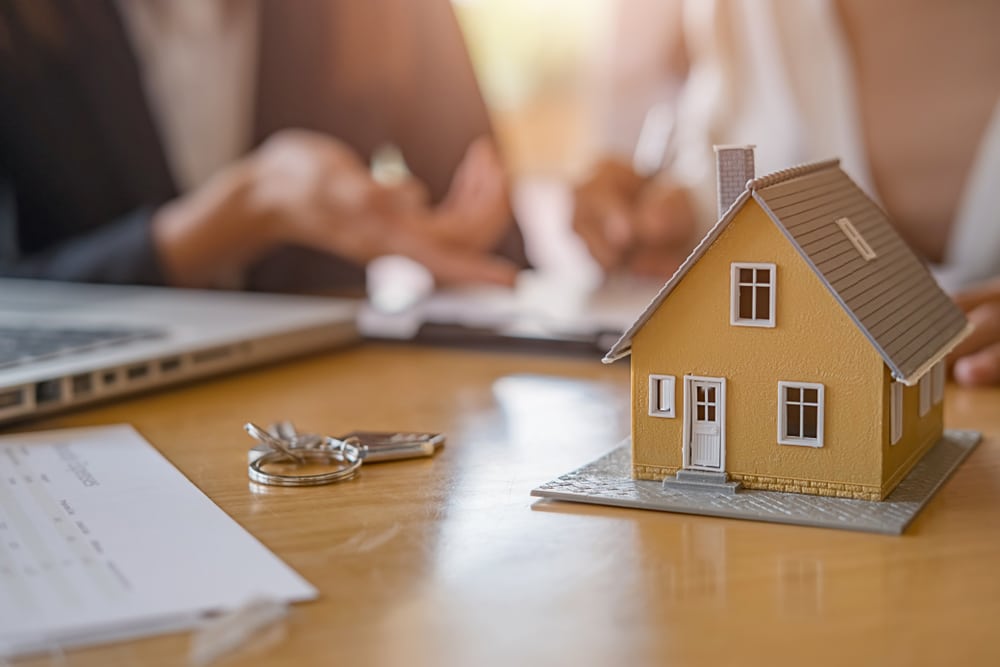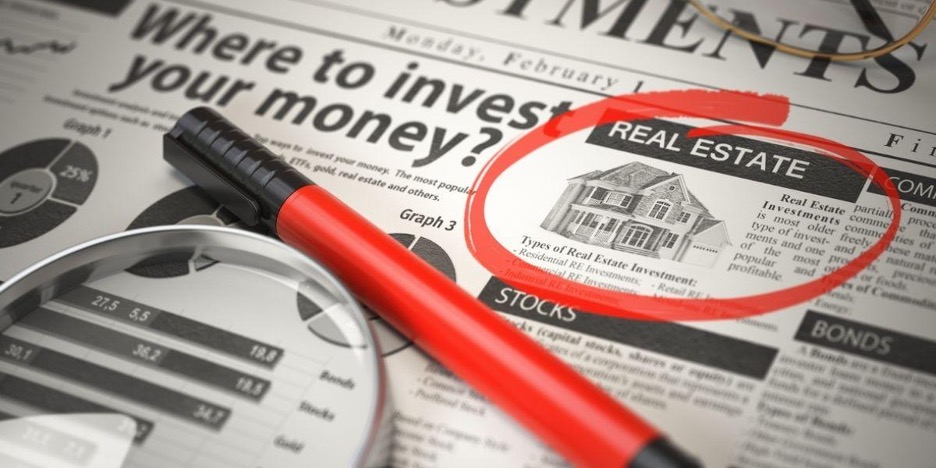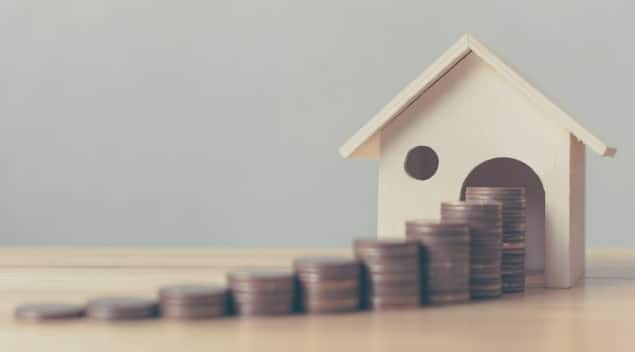
The Truth On How Many Investment Properties You Need To Retire
Using real estate to create financial security for the future is a popular option for many Australians, however it can be tricky to know how many investment properties you need to retire to get the outcome you desire.
When it comes to planning for retirement, you need to ask yourself, what kind of lifestyle do you want? For most people it’s to enjoy their golden years without having to worry about money or penny pinching from week to week.
Investing in property is a great way to set yourself up to thrive in retirement because it has the potential to not only increase your net worth but also provide you with a stable income. Many investors ask the question of how many investment properties you need to retire?
The short answer is that there is no magic formula – everyone’s retirement goals are different, not all investment properties perform similarly, and predicting the future is impossible.
However, with help, you can develop a plan for building a portfolio that will satisfy your retirement lifestyle needs. The key is to be able to see past your first one or two properties as you’re going to need a much larger portfolio than that to gain financial freedom.
WHY INVESTORS FUND THEIR RETIREMENT WITH REAL ESTATE
There are a multitude of ways to fund your retirement, and the most common among Australians seems to be relying on superannuation and pension payments. Unfortunately the harsh reality is that depending solely on these will likely force you to live very frugally, especially with living costs rapidly rising. Today the pension sits at about $36,000 per annum, per couple. It doesn’t sound like a lot right?!
Real estate is a long-term investment and therefore time is on your side. The earlier you embark on your investing journey, the greater success you’ll likely achieve. Real estate is a key investment vehicle for many Australians when it comes to planning for retirement and that is because it is stable and will always be around in society.
Positive Cash Flow
Rental property has the potential to generate income if done right, and this is one of the main reasons why people use property investing to retire. The cash flow from a property refers to the pre-tax income earned and is calculated using the below formula:
weekly rent × number of weeks rented in the year = annual rent
– all expenses (excluding interest)
÷ purchase price × 100 (to get a percentage)
This is also known as rental yield. A good figure to aim for is between 4-6%, the idea is for the yield to mirror the interest rate as closely as possible. Ideally, your rental income and tax deductions should be covering the majority of your running costs, and then some to generate a profit.
However there may be times when your cash flow is lower than forecasted, or even negative. Any business is unpredictable, especially the landlord business, you may have to pay for unexpected repairs, or your property may take longer to find a quality tenant.
Any good property investor understands the importance of safety buffers, which refers to money set aside in your budget for any unforeseen expenses. This is not extra money to go on holiday or buy a new car, it should be reserved for legitimate expenses connected with your investment property(ies).
Capital Growth
Home prices in Australia have historically increased over time. According to the latest report by the Australian Bureau of Statistics, the total value of the nation’s 10.8 million homes grew by $2 trillion to a record $9.9 trillion in 2021. What this means is that we have seen a 23.7% increase in residential property prices in the last 12 months, one of the strongest annual growth records.
Of course, nothing increases linearly, and real estate is no exception. However, as mentioned property is a long-term investment, which is why most real estate investors adopt a buy-and-hold strategy so they can make the strong gains that come with a normal real estate cycle.
Recycling Equity
The quickest way to build a large property portfolio is by recycling equity. Equity is the difference between the market value of your property and the amount still owing on your mortgage. This strategy allows you to purchase a property with someone else’s money.
Basically, the bank will allow you (pending conditions) to borrow against the available equity in a property. It can be scary to think about increasing your home loan, however you need to flip your mindset to see the benefit of expanding your asset portfolio using very little of your own cash.
Tax Benefits
Offsetting income with depreciation is perhaps one of the biggest tax advantages of property. Including depreciation within property expenses can increase the loss on paper without incurring a cash loss. Therefore, increasing the expenses and amount of tax deductions available.
Along your investing journey you may have a property in which the expenses exceed the rental income. This is known as a negatively geared property and is most beneficial for high income earners because the ‘loss’ can be offset against other income.
KNOWING YOUR NUMBER
Before you start building your property investment strategy, you need to get really clear on what kind of retirement lifestyle you want to live. This will help inform how many investment properties you need to retire.
It’s a morbid question, but it will underpin your future decision making, how much money do you need to die? Understanding how much income you want each year in retirement is a thought that many of us don’t think about until it’s too late. Whether you’re after a comfortable or lavish lifestyle, you need to do the maths.
- Determine your desired retirement annual income
- Assume a gross rental yield (between 3-6%)
- Divide income by rental yield
This will give you the amount of money you should have invested in property. It’s then up to you to use this figure and work out how many properties you should own which will be dependent on how much retirement income you desire.
THE THREE PHASES OF AN INVESTORS JOURNEY
There are three phases to building a property portfolio before an investor is ready to reap the rewards of their hard-earned labour.
Acquisition of Investment Properties
The period of acquisition refers to the initial stages of an investor’s wealth building cycle. Your main goal will be to acquire as many properties as possible to help build your asset portfolio quickly, and to generate as much rental income as you can to increase cash flow.
In this stage of an investor’s journey, interest-only loans can become an important part of the toolkit because they allow you to only repay the interest charges on your loan for a specified period (3-5 years). Interest only loans allow investors to tap into a market that they wouldn’t otherwise be able to afford. However, they can also be risky, especially when the principal payments kick in. Any good investor will prepare for this and ensure they have a buffer set aside.
During the acquisition stage, you want to be focusing on high growth properties in a variety of locations in order to make the most out of your equity gains. To do this, you will need to understand what factors influence the market.
There are both macro and micro factors that drive the real estate market.
Macro drivers of growth:
- Population growth
- Infrastructure growth
- Supply vs demand
- Economics
- Demographics
- Yield
For example, you want to have your eye on locations where there are infrastructure developments because this attracts people to a location (population growth). In or near cities are often high growth markets because there are always job opportunities (economics) which again, brings people to the area. These people will become your tenants.
Micro drivers of growth:
- The owners established benchmark
- The new established benchmark
- Socio-economic
- Symbolic landmarks
- The ripple effect
The above drivers will help you narrow down what micro markets to buy in (suburbs or towns). For long-term growth, symbolic attributes are a unique aspect that can enhance the performance of an area. The owner’s established benchmark is when an investor looks for the ‘worst house on the best street.’ Finding a property that is a blank canvas, situated close to properties higher in value will give you a good chance of increasing the value of your investment through renovation.
Consolidation of Property Portfolio
Once you’ve exhausted all of the equity the banks will allow you to lend against, the next phase is to consolidate your investment portfolio. You’ll need to refine your investments to maximise rental yield, therefore increasing your cash flow. Most investor’s will cycle through the acquisition and consolidation phases numerous times until they are ready to transition to the lifestyle phase of their investing career.
To move into a positive cash flow phase, you will need to lower the loan-to-value (LVR) ratio of your portfolio. What this means is that you’ll need to reduce the amount of debt you have, you can do this in several ways:
- Sell one or more non-performing properties: as you move closer to retirement, it is wise to let go of properties that are making a loss, otherwise you’ll have to sacrifice some of your retirement income to maintain the investment.
- Add value to your properties through development or renovation: increasing the market value of your property will therefore increase the value of the investment against the mortgage.
- Stop buying properties (or reduce the rate at which you’re buying them): when you’re in the growth stage, it can get quite exciting expanding your portfolio quickly, but more properties doesn’t necessarily mean more income. As you get closer to retirement it is best to become very selective with the properties you acquire.
Once you’ve reduced your debt to a lower LVR – maybe somewhere like 50% or so – you’ll be able to enjoy the benefits of leverage while owning property that is positively geared. A property which is geared positively means that the income derived from owning the property exceeds the financial and maintenance costs incurred. Positive gearing is generally seen as lower risk than negative gearing because it provides more consistent income.
Retirement Lifestyle
You’ve finally made it! The lifestyle or legacy phase of an investment property career is the place the property investor is striving towards. You’ve built your portfolio to a point where it is generating enough income for you to retire (in whatever way that is to you).
Maybe you’ll work fewer hours in order to do something you enjoy more, such as travelling, gardening or golf. Regardless of what retirement means to you, the main idea is that you no longer need to work in order to fund your lifestyle, because your investment properties now provide that income for you.
Once they reach retirement, most investors adopt a more conversative approach to investing, in order to protect their assets that they have so tirelessly grown over the years. During this stage, there is less focus on building your portfolio and more emphasis on enjoying passive income.
THERE IS NO MAGIC NUMBER TO HOW MANY INVESTMENT PROPERTIES YOU NEED TO RETIRE
Everyone wants to have passive income in their retirement, but not many actually reach the stage where they can successfully make the switch. The first step is deciding what kind of retirement lifestyle you want, and then working out how much money you’ll need to fulfil that.
If you’ve decided that property investment is your chosen vehicle for creating wealth, then your next step is to get help. Instead of asking, how many properties do I need to retire, you want to focus on the combined value of your portfolio and the returns it provides.
Find someone that has done what you want to do and follow their example. That’s where the Positive Real Estate team comes in. Learning from someone who has done what you want to achieve is the quickest and easiest way to learn.
Come along to one of our free property investment seminars. Our coaches and mentors have real life experience as property investors and can give you the tools, resources and knowledge to help you build your wealth portfolio for retirement.
Register now for the free property investor webinar
See our property investment strategy guide
.
Recent Articles
Investment Property Financing – Comprehensive Guide 2023
You won’t get very far as an investor without the ability to secure credit. Understanding how to...
Ultimate Property Investment Strategy Guide 2023
Which Property Investment Strategies Will Make You Money? Building your property investment...
How to Build a Property Portfolio with $100k or Less
Starting your property investment journey can seem daunting. There’s lots to research and plenty...
How To Develop Good Financial Habits That Lead To Wealth!
Good financial habits are the basis to creating wealth. Building financial freedom is not something you learn overnight, it takes time and a foundation of solid habits that you perform day in and day out.
The 7 Plans Every Property Investor Must Know To Succeed
When it comes to property investing as the saying goes, if you don’t have a plan, then you could be planning to fail! While there are many factors we can’t control in the market, there are certain facets we can manage to give us the best possible chance of success. In this article we will help you understand the 7 plans every property investor must know.
What Is The Best Type Of Property Investment?
When you strive to learn everything you can about investing in property, you increase your chances of creating generational wealth! The best type of property to invest in is dependent on a number of factors about the investor and their real estate strategy.
The Property Investment Basics That You Need To Know
Real estate has the potential to become your main vehicle for creating wealth, but only if you take the time to learn some crucial property investment basics to set you up for success as an investor.
Retirement Planning Tips For Property Investors
It’s the Australian dream – the clock ticks 65 (or earlier) and off you sail into the sunset of retirement to live out the rest of your years stress-free. Sadly, for some, this will remain nothing more than a dream with the drastic cost of living rising and no plan to cover the shortfall.
10 Ways To Save For A House Deposit [For Investors Or First Timers]
Saving for a house deposit to get onto the property investment ladder is tough. Especially with the cost of living drastically going up. After bills, rent/mortgage, groceries, petrol, insurance… there isn’t a whole lot left for saving. But that doesn’t mean it’s impossible! By adopting these 10 ways to save for a house deposit you’ll be ten steps closer to building out your portfolio and creating future wealth.












![10 Ways To Save For A House Deposit [For Investors Or First Timers]](https://positiverealestate.com.au/wp-content/uploads/2022/09/saving-for-a-deposit.jpeg)